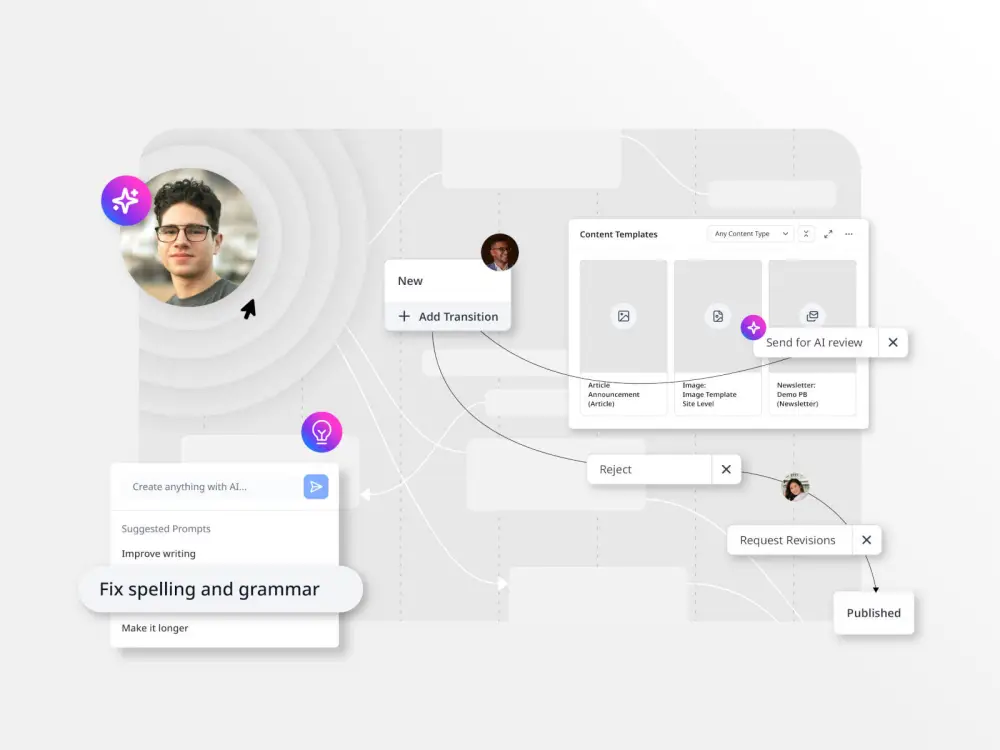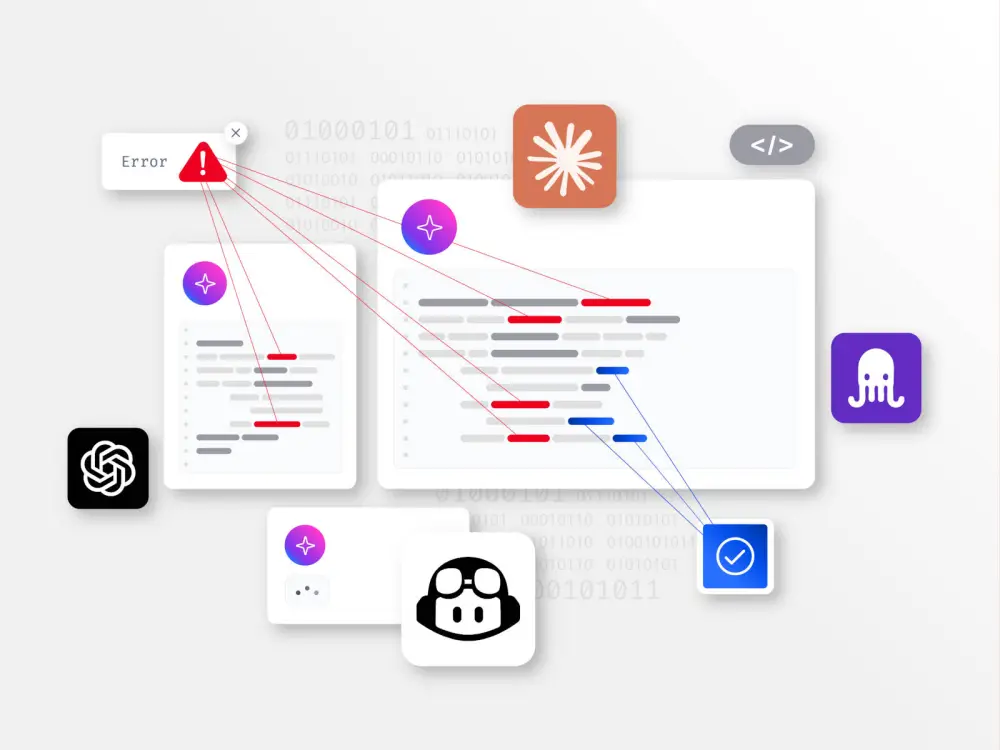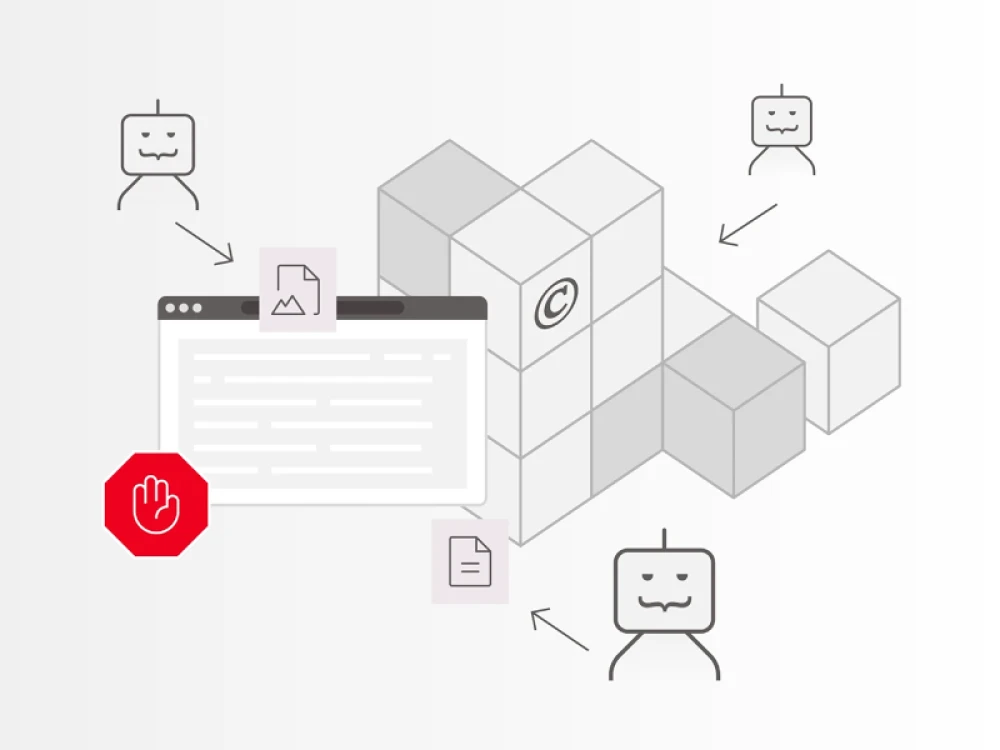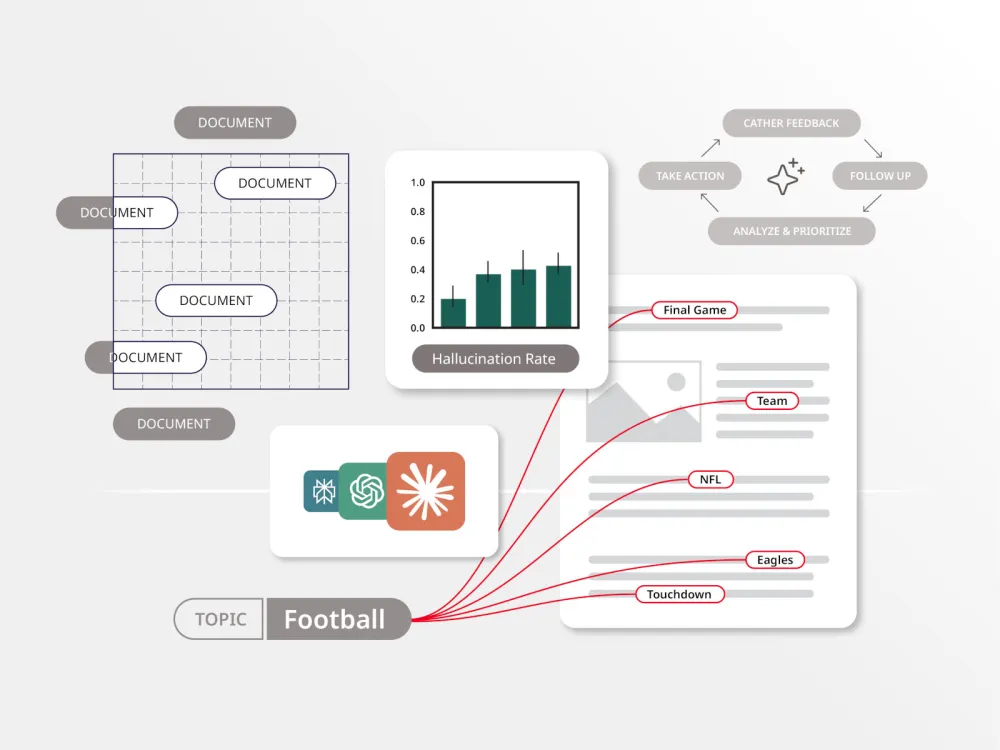Generative AI has changed the content game, upending the scales of supply and demand for traditional media publishers as well as marketers across corporate and brand communications, B2B publishing, e-commerce and more.
Let’s start with the obvious: AI has changed the playing field. Digital media companies relying on eyeballs to drive impressions and ad revenue were already facing a battle to compete across fragmented channels and delivery models. The new reality of “zero-click” searches in Google is with us and showing up in data representing declining clicks to websites from organic search — while impressions (i.e., the total number of searches occurring in a search engine like Google) are going up. Search might be the front door, but users are finding what they need in the Google yard sale versus going inside to shop.
Clicks are no longer the gold standard for SEO. Ranking doesn’t guarantee reach. The win is being in the answer itself.
Why? With AI-powered answers available right within the search experience, users can gather most, if not all, the information they need without needing to click. Furthermore, if they don’t find what they’re looking for on the first page of search — featuring standard search results but a plethora of other options like the AI Overview, People Also Ask and other Knowledge Panel options — those blue SERP links we’ve been so accustomed to over the years may not even appear, let alone garner a click.
Simply put, clicks aren’t the metric that matters anymore. Today, nearly 60% of Google searches now end with zero clicks. This number is up from 26% in 2022. Other metrics like AI retrieval rate, citation frequency and mention sentiment now apply. In order to measure and monetize your content ROI, previous KPIs and tracking models must evolve.
But, as one attendee at Brightspot’s recent Illuminate user conference noted, “Citations don’t pay the bills.”
Clearly, content publishers and marketers across the board are working to evolve, adopt and adapt to the new realities of an AI-augmented content landscape. Various sessions at Brightspot Illuminate looked at the practical applications of AI in content workflows, but also the strategic implications of AI on businesses and their business models.
Below are some key takeaways as we look out over the changing landscape — and marketplace — for content that delivers.
Search is still the battleground for digital discovery
Whatever the acronym — SEO or GEO — search is still the channel that matters. What’s changing is how discovery happens. Google remains dominant, but its search experience has shifted from a gateway of blue links to an ecosystem of AI-generated overviews, knowledge panels and answer boxes. Meanwhile, large language models like ChatGPT and Perplexity are shaping consumer expectations for how information should be delivered: fast, conversational and context-rich.
This reality makes brand visibility in AI answers as important as traditional SEO. AI models pull from a wide mix of sources — Reddit, Wikipedia, reviews, news sites — and increasingly break a single query into many sub-queries behind the scenes. To show up, your content must emphasize E-E-A-T (experience, expertise, authority, trustworthiness), be structured for AI to parse (think FAQs, schema, authoritative how-tos) and be reinforced with credibility signals like backlinks and mentions. In other words, search is no longer just about keywords — it’s about coverage, context and trust, the building blocks that will determine whether your brand is found or invisible.
Create original, authentic content that speaks to your brand and your brand values
The same principles of great content for SEO apply for GEO — or generative engine optimization. Write content that offers value, service and uniqueness to enrich the user’s intent for seeking that information.
Yes, AI-generated content can be created and delivered at scale, but is it providing value and adding to what we — and the worldwide web — already know about a given topic or subject? Large language models (LLMs) like ChatGPT, Claude or Gemini are, like Google, also crawling the web for their references. Unlike Google, they do not fully render the pages. Meaning? Structure your content so AI cites you, using schema markup and thoughtful heading and paragraph structure to help the LLMs understand your content faster and more effectively.
But it comes down to the content you write. Does it answer the question with authority? Does it come with subject-matter expertise or a unique perspective that establishes your content or site as a topical authority? Is your thesis backed with original research and metrics that are new or not available anywhere else? Is your material being referenced to establish you as a domain authority on a given topic?
In a world flooded with AI content, your brand — your humanity — becomes your unfair advantage.
These are not new questions to answer when it comes to creating and formatting high-quality content. But they are even more important given how we know LLMs are fanning out across the information ecosystem to learn and respond to ever more detailed and complex requests for information.
Looking at this from a different vantage point, Jeffrey Malcolm, Operating Adviser at Goldman Sachs, expressed another viewpoint around the value of content and how to monetize in this new era. As a private-equity investor invested in media companies that can provide returns on quality content, Malcolm says authenticity and brand integrity are key.
“What is the company’s content competitive advantage?” he said when asked about content monetization during Brightspot Illuminate. “Is it something that can be easily replaced? Does that content provide deep content expertise?”
The winning model is mixed: use free content to drive leads, then upsell to curated, verified paid experiences — guided by AI to match intent along the journey.
Disruption creates opportunity for content-monetization business models that can adapt
At Brightspot Illuminate, Kai Blakeborough, Senior Research Analyst, R&D, at mutual insurance firm Brotherhood Mutual, shared the example of how Robinhood transformed retail investing with its freemium model.
Previously, large investment firms like Charles Schwab or Fidelity dominated a closed-door investment world where intelligence was shared among high-net-worth individuals and investors willing to pay the trading and premium access to content.
Robinhood changed the game for day traders by turning investing into an always-on, content-like experience. Its commission-free model served as a disruptive headline that reframed stock trading as something accessible to anyone, not just professionals. The mobile-first interface delivered real-time market updates in a simple, social media–style feed, giving traders quick, digestible information at their fingertips.
Beyond the product design, Robinhood leaned into gamification and storytelling. Push notifications, confetti animations and curated watchlists acted like micro-content that kept users engaged and trading more often. With its witty Robinhood Snacks newsletter and podcast, the company further packaged financial news in a casual, bite-size format that resonated with a new generation of retail investors.
Also on the Brightspot Illuminate content-monetization panel with Blakeborough, Cvent’s VP of product management, McNeel Keenan, reinforced this view of content-monetization models needing to adapt through his lens of live events and the related opportunities that come.
Post-pandemic, the live events space has rebounded to represent a landscape ripe with opportunity across business conferences, trade shows, concerts, sports and more. However, he notes, the connection between original, unique content that’s created at such events — and thus, monetized — is not exactly a new business model.
“One of the first content channels that were pioneering content was music,” he noted. “Monetization comes from the tour. Ticket sales, merchandise, sponsorship slots usually deliver better ROI than digital advertising.”
Events are no longer ‘untrackable’ side bets — they generate authentic content, activate community, and are increasingly core to the business model.
Whether it’s music that brings in a new lifelong fan or investment advice to help a day trader turn a profit, each is an example of “free” content that turns opportunity into loyalty. Taking it one step further, unique, events-based content like videos, artist interviews or expert advice is content that AI can never replace. AI may be an unassailable historian about everything that’s ever happened, but it can never be in the room to replace the human witnesses. And that’s a content competitive advantage that can — and should be — mined for opportunity.
Or as Brotherhood Mutual’s Kai Blakeborough explains, “Always know where your customers are in the journey in order to upsell them to your premium content models.”
Human and AI content aren’t at odds — they’re complementary
Yes, AI is the 800-pound gorilla running roughshod over all that we knew and held true as content producers and marketers. But all isn’t — and shouldn’t spell — gloom and doom.
Applied intelligently, so to speak, AI creates opportunity to amplify and grow your content investments in a way that’s additive, not destructive to a human-led content approach.
First, AI-supported workflows and content-creation tools equate to speed and greater efficiency. Think tools to help ideate around content ideas, aid content discovery and recommendations across existing libraries of content or assist with proofreading or streamlining repetitive tasks like writing SEO titles or image alt tags. Time saved here for each of these steps spell time gained for writers and editors to invest in the jobs they are being paid to do.
During his Brightspot Illuminate demo of the 2026 roadmap, Brightspot President and Chief Product Officer Ravi Singh described AI in Brightspot CMS as “ambient intelligence” that goes beyond artificial. Yes, AI can be used to mass produce and commoditize huge volumes of synthetic content, but in his eyes, the real value of AI comes from “human-first AI” that’s backed with content that’s on-brand, governed, traceable and transparent when it comes to modifications through AI.
For us, AI is about content enrichment. It’s not just creating with AI for creation’s sake. It’s about how do we create content faster if we already have an idea. Or, we have a draft and how do we use AI to make sure our points are sharp and that the content is actionable.
But it’s not just modifications. AI offers opportunities to improve and extend your content — and further the ROI for that content investment. Think, the power of personalization to extend messaging from one to many with AI-powered content variations. Auto-applied brand messaging rules to ensure each piece of content on your website is consistent with your company’s styles and brand guidelines.
“Use AI to create content, grow advocacy and audience reach with new content,” advises Brotherhood Mutual’s Kai Blakeborough, an early and strong advocate of AI adoption within his organization.
He also recommends that companies not overlook the opportunity to consider internal content resources as a well of vast internal knowledge available to be tapped and leveraged. “One of the principal purposes of AI is to connect people to knowledge,” he says. “Internal knowledge has immense value. Companies have the fuel internally to make AI work, including business intelligence, improved workflows, content augmentation and more.”
Closing thoughts: Combining human insight and AI scale for ROI
Generative AI is reshaping how content is discovered and monetized, shifting value away from clicks toward citations, visibility in AI answers and brand trust. As Google search evolves into an AI-powered ecosystem and large language models redefine user expectations, publishers and marketers must adapt their strategies for discovery, authenticity and monetization. Success will depend on creating original, authoritative content structured for AI retrieval, experimenting with new business models that turn disruption into opportunity and combining human expertise with AI-powered efficiency to amplify reach and ROI.














